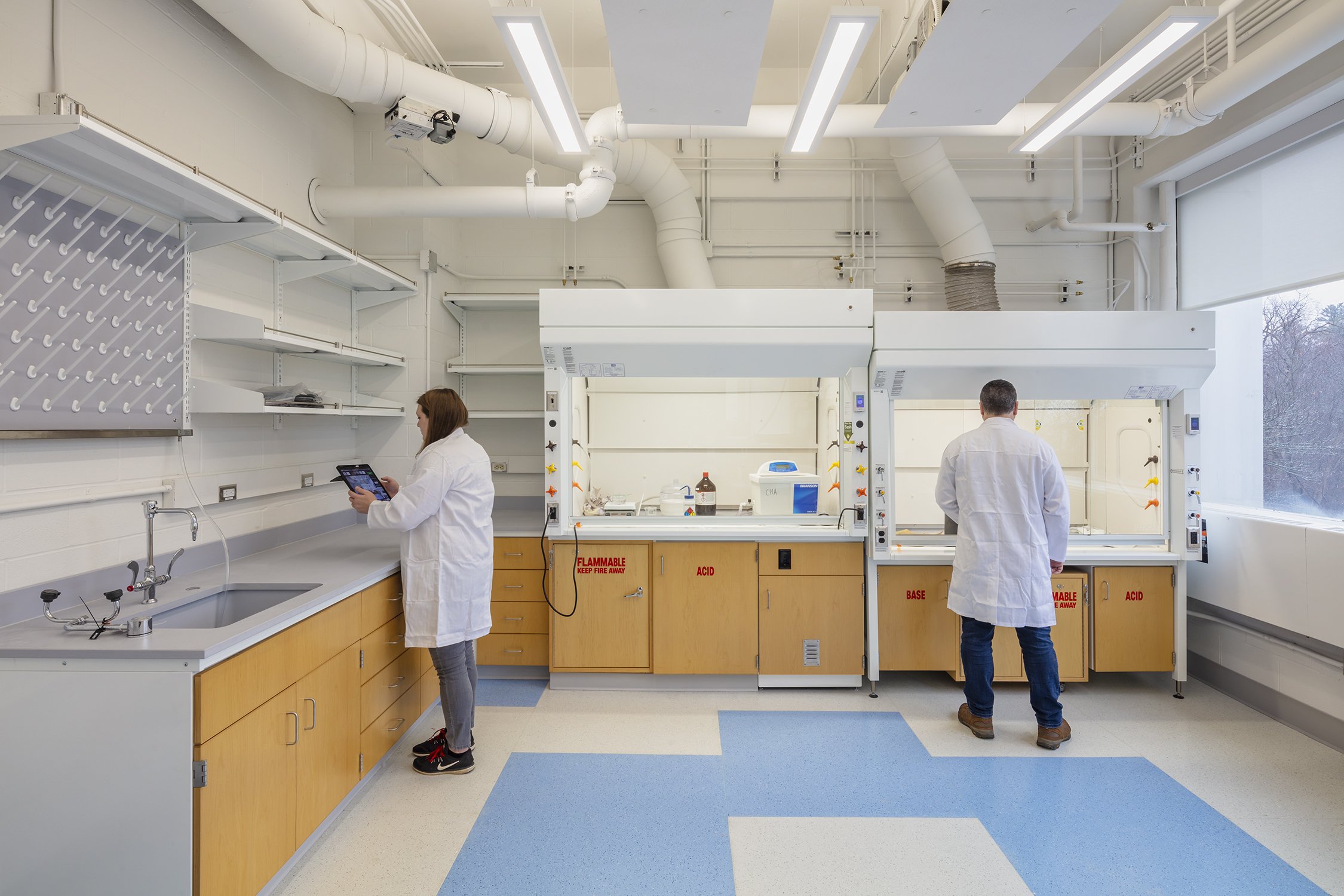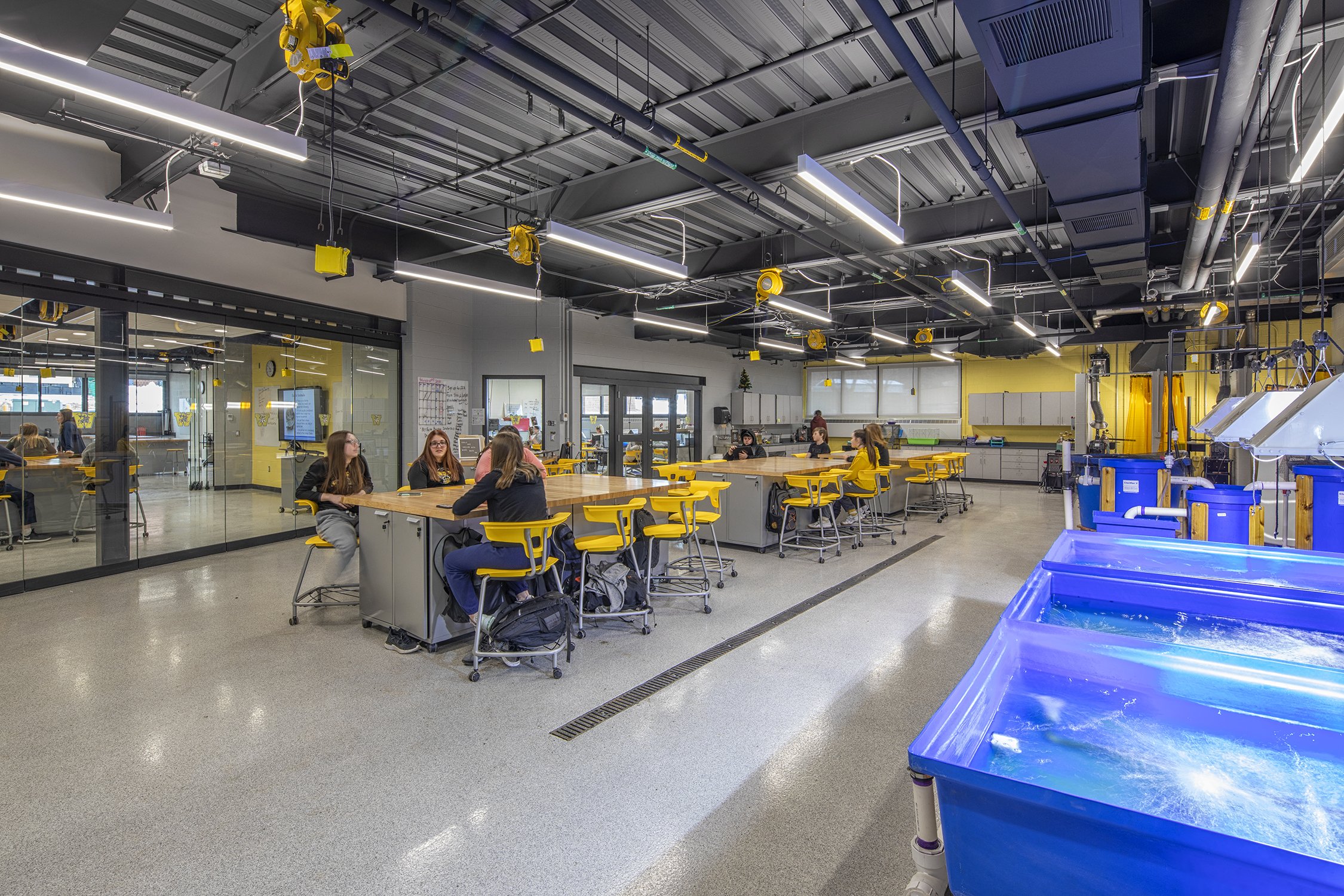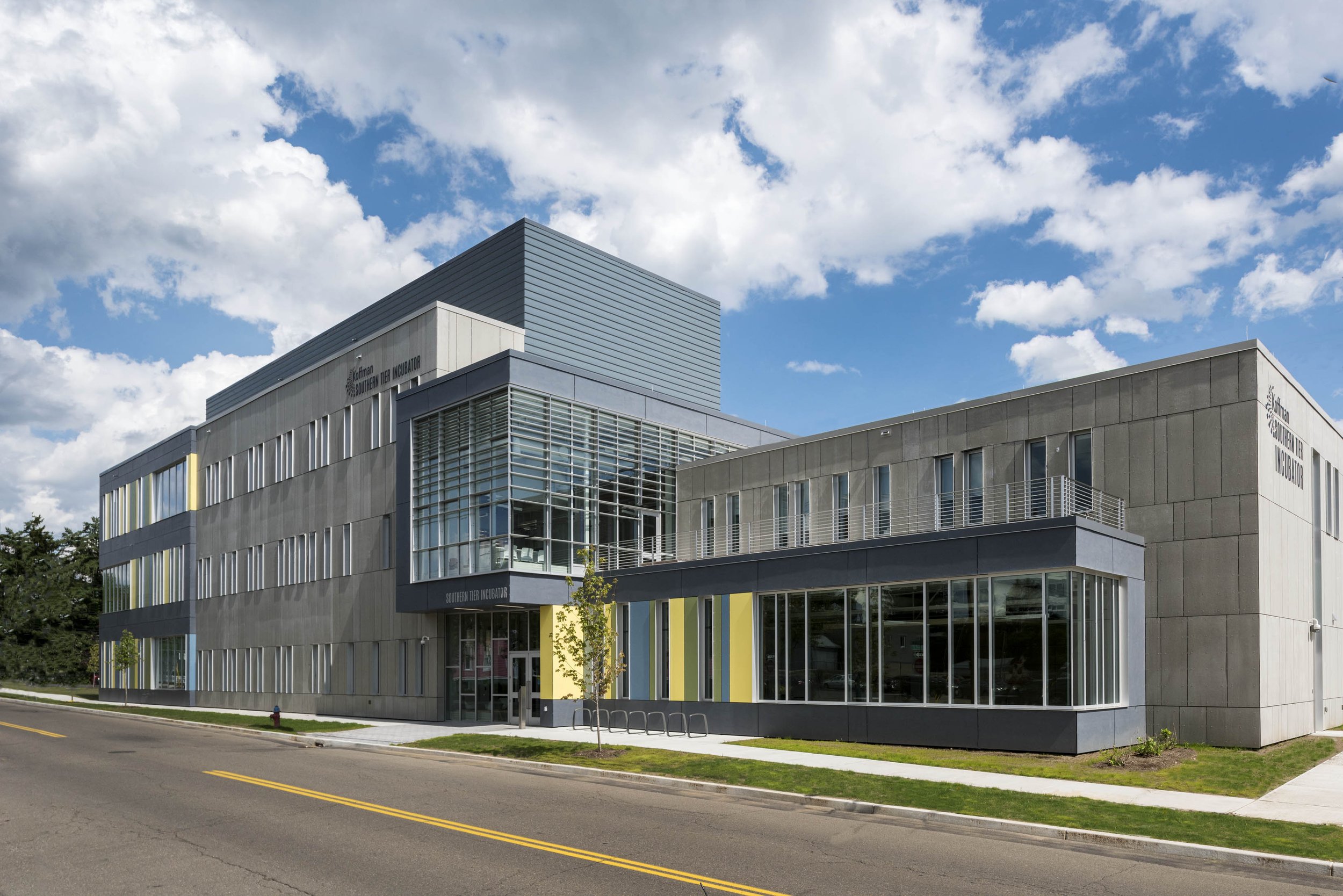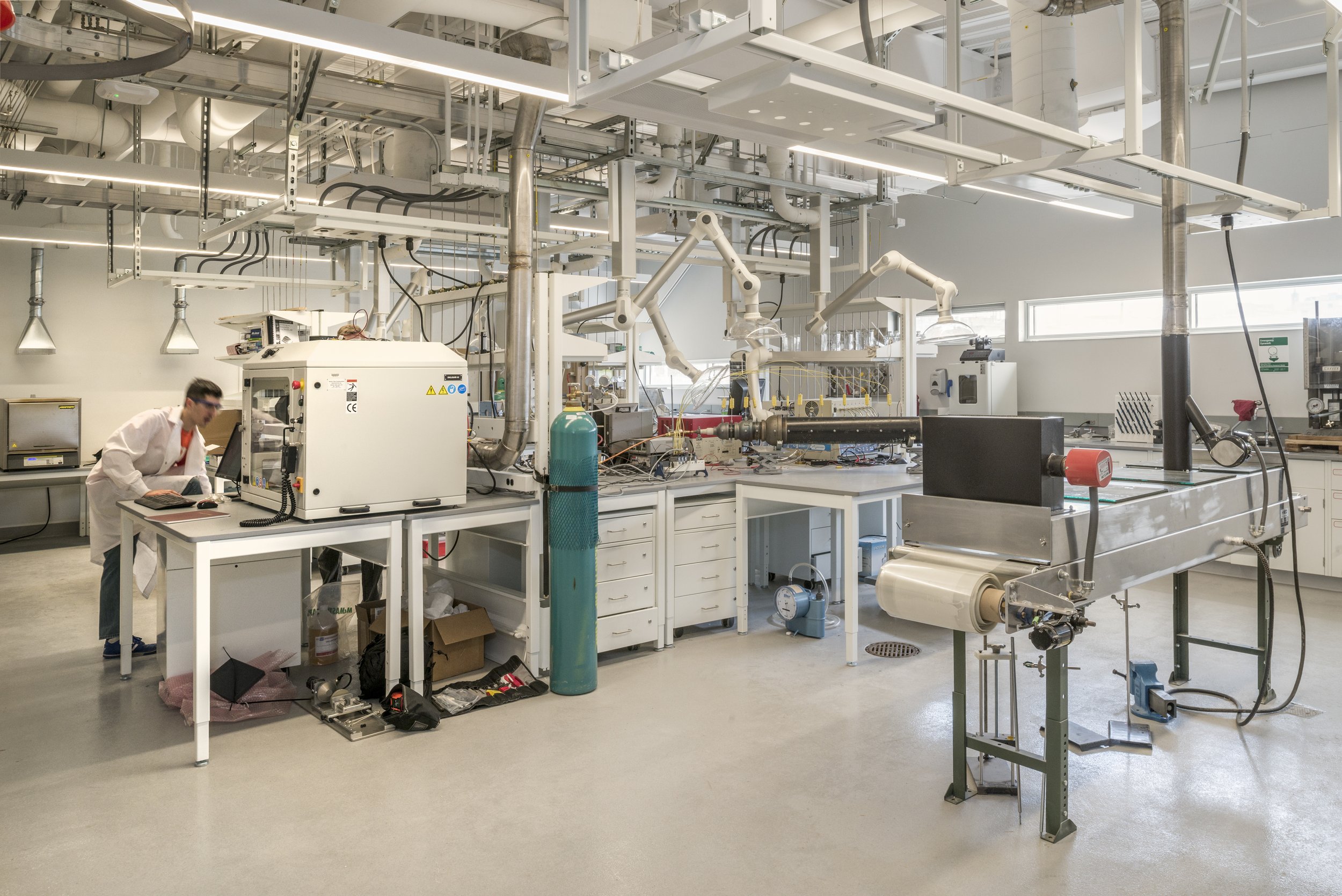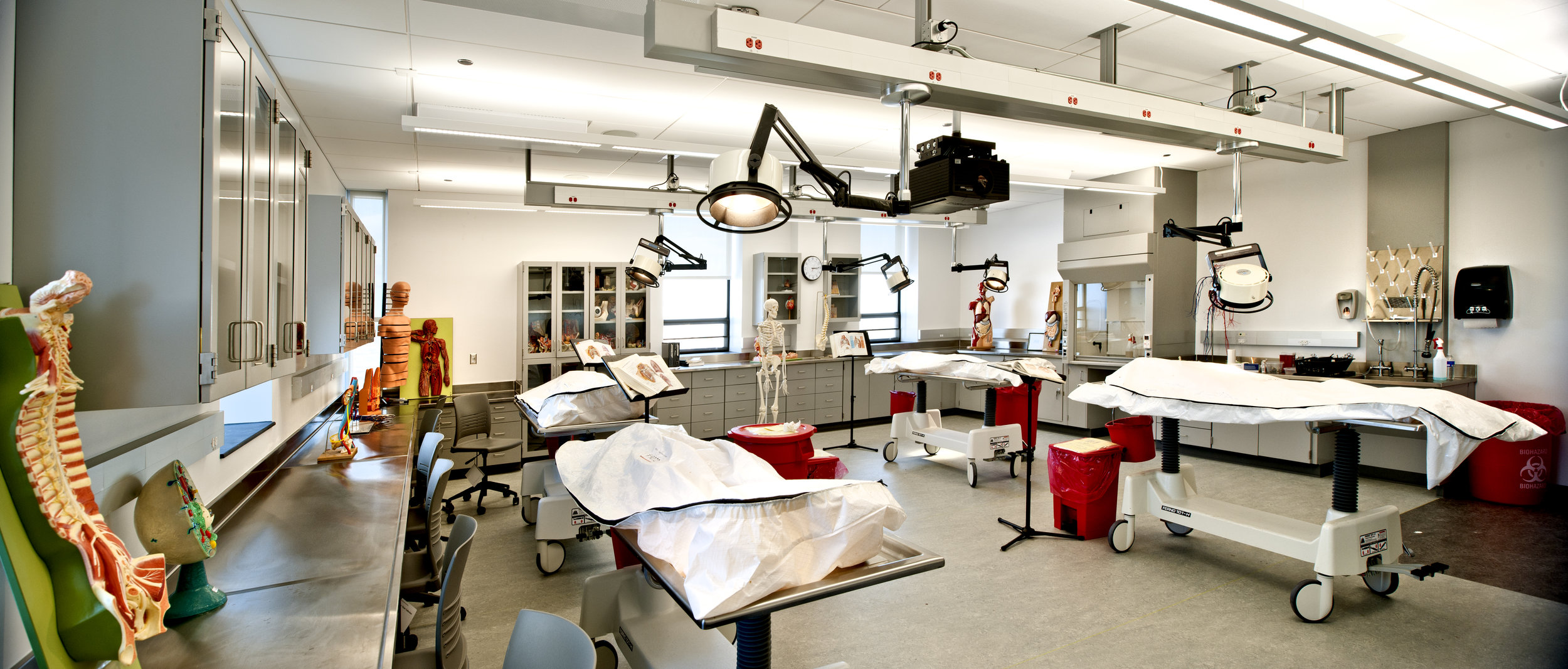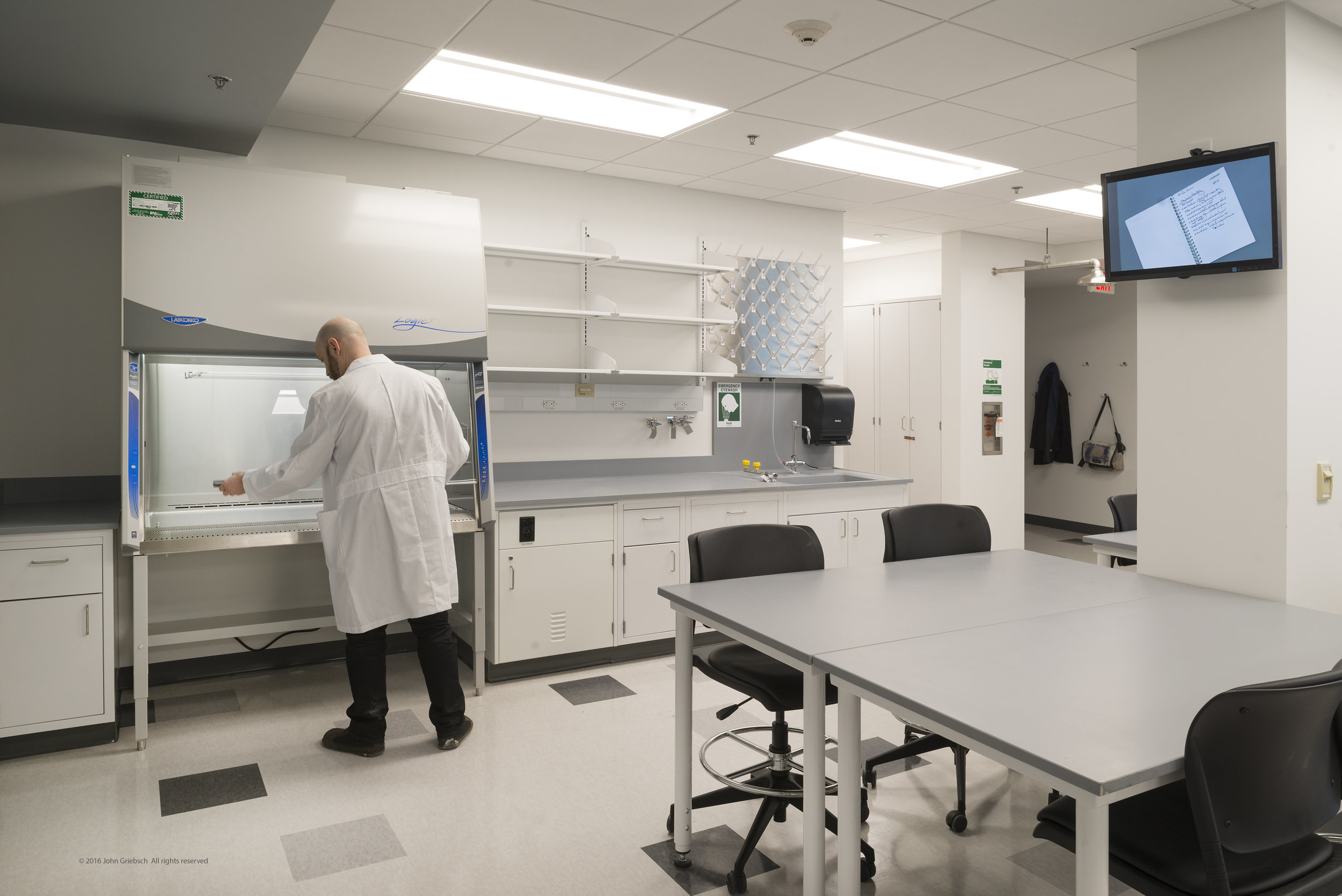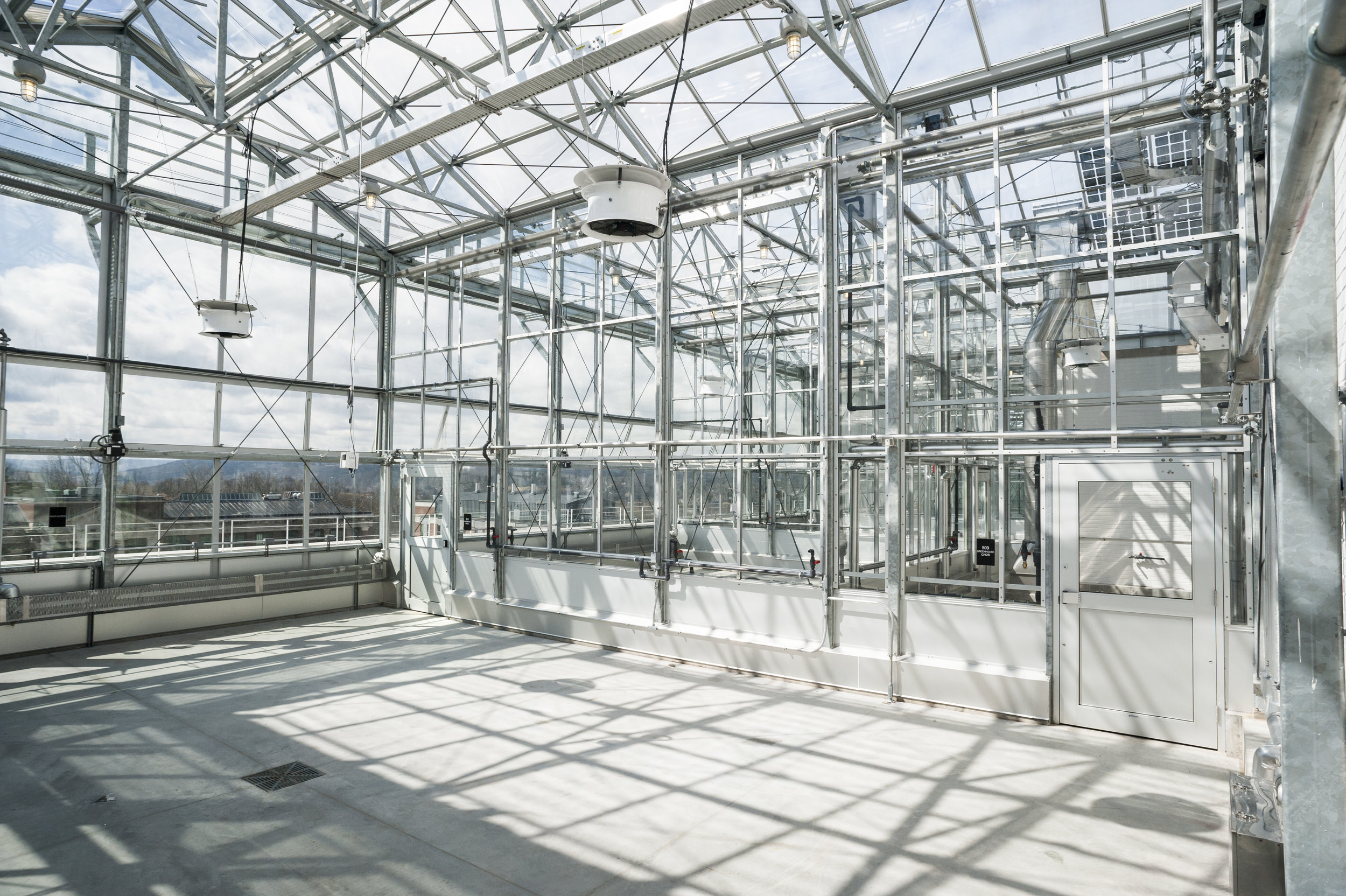SYRACUSE CENTER OF EXCELLENCE.
SYRACUSE UNIVERSITY
Designed to function as a test bed for environmental and energy technologies and building innovations that the Center promotes.
Ashley McGraw was Executive Architect for the headquarters of the Syracuse Center of Excellence in Environmental and Energy Systems. Built on a prominent brownfield site in downtown Syracuse, the 55,000 SF facility is designed to function as a test bed for environmental and energy technologies and building innovations that the Center promotes. Natural ventilation, personal ventilation systems, heat recovery/reuse systems, rain water capture/reuse, vegetative roof, and geothermal ground source heat pumps are among the sustainability strategies employed in the building’s design.
Considered a “living lab,” the facility is located on a remediated brownfield site that anchors the corridor connecting the city center and the university campus. The building provides a new space for the SyracuseCoE’s collaborative research and demonstration projects, in the areas of indoor environmental quality, clean energy and energy efficiency. Unlike traditional introverted research centers, many of the lab environments are on public display, visually communicating the research taking place within the institution. The laboratories are organized along a circulation path that acts as a gallery, creating an open and inviting architecture to draw the public to the site. In addition to specialized research facilities, the headquarters houses offices for the SyracuseCoE, classrooms, public spaces, and ‘start up’ business incubation space.
Ashley McGraw coordinated a large, integrated design team and ensured constant communication with the building’s multiple stakeholders. The Design Architect was Toshiko Mori Architect.
The building has received a LEED Platinum Certification from the U.S. Green Building Council.
A geothermal borefield provides half of the heating and cooling needs through more than five miles of tubing installed in forty-nine 300-foot-deep wells. Radiant heating and cooling and displacement ventilation reduce the building’s demand for mechanically driven air. A laboratory exhaust stack reduces fan energy as air from labs is exhausted at lower speeds compared to conventional designs. An energy recovery ventilator exchanges heat and moisture between outgoing and incoming air streams, significantly reducing the amount of energy required to condition incoming air.
The Thermal Lab facilitates both fabrication and testing of very small fuel cells. The laboratory is designed to accommodate a wide variety of fabrication and testing equipment.
Construction was completed on the project in 2010. However, the phase 1 project did not include the fit-out of the lab wing. It was intended that the labs would be installed individually as funding became available. In 2011, Syracuse University contracted with Ashley McGraw to do a planning study for four laboratories, a Thermal Lab, a Combustion Lab, a Hot Water Heater Testing Tab, and a Biofuels Pilot Facility.
The Hot Water Heater Testing Lab accommodates eight (8) domestic hot water heater testing stations. Testing is to be conducted over an estimated two year period.
The Combustion Lab is used to combustion test hydrocarbon fuels such as biofuels, aviation and other fuels. Small amounts of fuel are used. Lab is divided into two work stations. Shock Tube Lab and Flame Test Laser Lab.
The Biofuels Pilot Facility includes a biofuels plant, analytical area, analytical lab and storage in a 3,850 sf lab area with an additional plant and storage area on an 800 sf mezzanine.
Location: Syracuse, NY
Photos: Exterior/Interior: Iwan Bann; Laboratories: John Griebsch Photography









